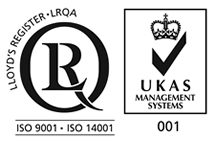
Main Products
Copyright 1998-2025 Firmetal Group All Rights Reserved. | Sitemap
The lattice interstitial of tantalum has the ability to absorb elements such as hydrogen, oxygen, nitrogen and carbon. Its actual solubility can reach a considerable value. Metallic tantalum can dissolve 20(atomic)% of oxygen at room temperature. If this solubility is exceeded, hydrides as well as very hard oxides, nitrides, carbides and their mixed phases will form. In order to remove the absorbed non-metals, high temperature and high vacuum or very pure inert gas protection are required.
Hardness is a sensitive indicator of the non-metallic content in tantalum and can also be used as a standard for measuring the purity of tantalum metal. In industry, there is a hardness difference of 100 to 200% between pure tantalum with a purity of 99.5% (by weight) (the limit of heat deformability) and cold-forgeable tantalum with a purity greater than 99.95%(by weight).
The purity and structure of pure tantalum produced from crude tantalum vary by different methods - electron beam smelting, vacuum arc smelting or sintering. Tantalum produced by electron beam smelting has the highest purity and the most complex structure.
The influence of cold deformation also depends on the content of various non-metals. The high-purity tantalum obtained by electron beam smelting has a relatively small influence on deformation, while the tantalum obtained by arc smelting has a larger influence, with a deformation rate of up to 99%.
As for the chemical properties of tantalum, they are similar to those of platinum. Tantalum has an extremely strong resistance to chemical corrosion in water-containing media. This is because tantalum has a very strong and dense surface oxide film protective layer. This oxide film is weakly acidic, so it is mainly eroded by alkaline hydroxide solutions. This oxide film is a semiconductor, so tantalum can be used as a capacitor. At 100℃, tantalum does not react with most organic substances. Tantalum is stable in all inorganic acids except hydrofluoric acid. The corrosion resistance of tantalum decreases as the temperature rises. Tantalum is also very stable in a series of liquid metals. When the temperature is above 300℃, the higher the temperature, the more intense the reaction of tantalum with oxygen, hydrogen and nitrogen. Due to the dissolution of these elements and the formation of nitrides, hydrides and various scaly films, embrittlement occurs. Under the action of atomic hydrogen, tantalum becomes brittle at room temperature. Under the conditions of a temperature of 50℃ and an oxygen partial pressure of 10-9 bar, tantalum will absorb oxygen. This "inhalation" effect is used in vacuum technology to reduce the concentration of gas molecules.